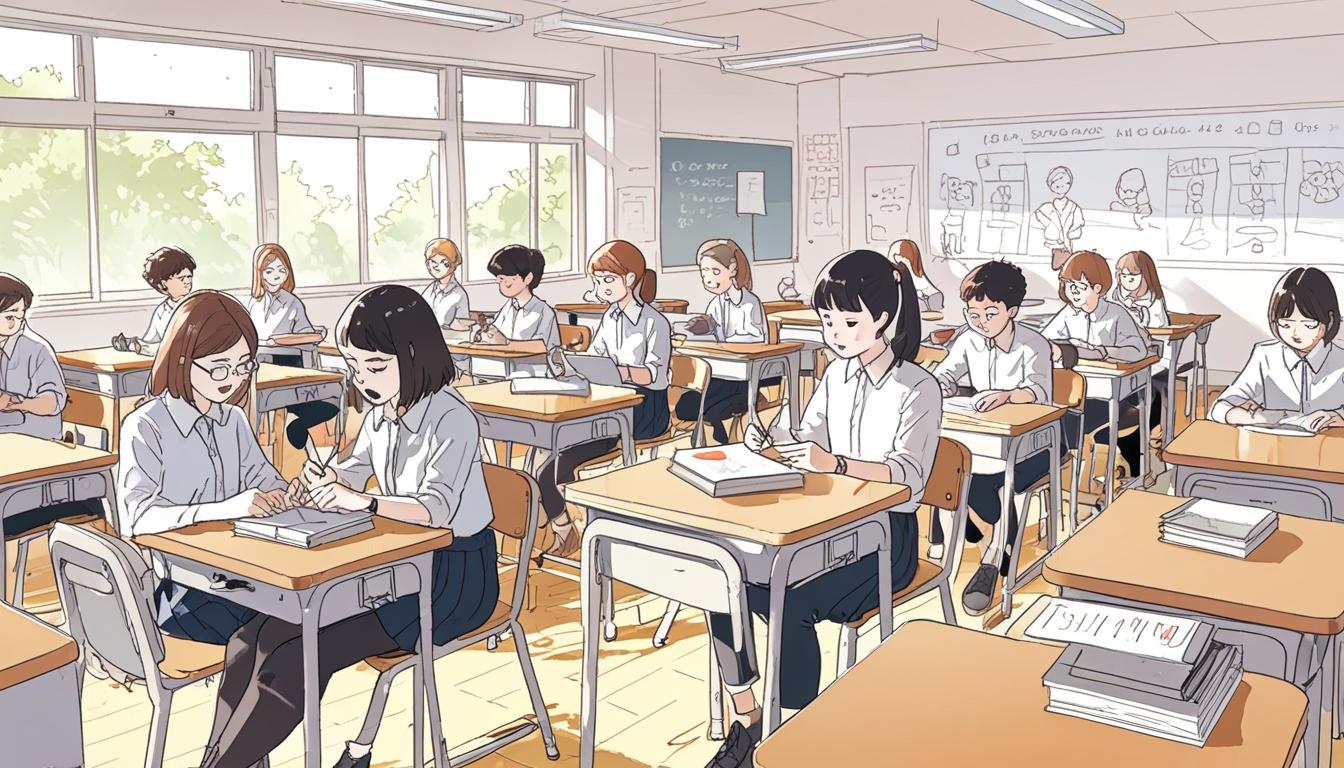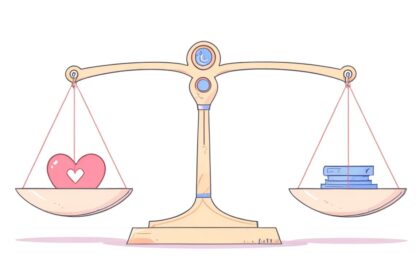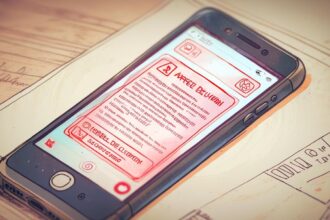Excelsior Academy in Hackney credits a strict mobile phone ban for raising A-level results from C to B, sparking fresh debate on the efficacy of phone restrictions in schools as government and academic studies remain divided.
Amid ongoing debates about the influence of mobile phones in education, a recent announcement from Excelsior Academy in Hackney, east London, has stirred attention. Headteacher Omar Deria claims a strict ban on mobile devices has been pivotal in enhancing the school’s academic performance, with average A-level grades rising from a C to a B over the last year. Deria describes the transformation as “miraculous,” asserting that students, once “glued to their phones scrolling,” are now more engaged and articulate in their classroom interactions.
While the school celebrates its achievements, the broader conversation surrounding phone bans in educational settings remains contentious. The UK Government has recently dismissed calls for a nationwide prohibition on mobile devices in schools, denouncing such measures as mere “headline grabbing gimmicks,” as stated by Education Secretary Bridget Phillipson. The government argues that existing policies grant headteachers adequate authority to regulate phone use without necessitating a blanket ban.
However, the effectiveness of these bans is far from universally accepted. Studies conducted by the University of Birmingham indicate that restrictions on mobile phones do not necessarily correlate with improved academic performance or mental health in students. This research monitored over 1,200 students across 30 schools and found no direct link between phone restrictions and better educational outcomes. Interestingly, while these bans might limit phone usage during school hours, they often fail to reduce overall screen time, as students compensate during their downtime at home.
Conversely, contrasting findings from the London School of Economics reveal that phone bans can yield significant academic benefits. Their research suggests that schools implementing such policies might effectively add an extra hour of instructional time each week, particularly aiding low-achieving and economically disadvantaged students. This disparity highlights the divergent viewpoints in the ongoing discourse about mobile technology in education.
At Excelsior Academy, Deria traces many of the school’s behavioural issues back to online environments, suggesting that a considerable portion of difficulties students face originate from their digital interactions. He claims that about 90 percent of the school’s behavioural problems have online roots, leading to challenges that disrupt the learning environment. Students echo this sentiment; one remarked that without the distraction of mobile phones, they can allocate more time to their studies, expressing gratitude for the policy shift.
Testimonials from pupils further illustrate the benefits of the ban. Seventeen-year-old Cilen Garip noted that the removal of phones has diminished distractions that previously hindered learning. Similarly, sixteen-year-old Hamz Hussain acknowledged that the ban has significantly improved his focus, allowing him to complete more schoolwork during the day – thus enabling him to make better use of his evenings.
In a society increasingly aware of the psychological impacts of social media, the ban has facilitated face-to-face interactions, with students reporting greater camaraderie amongst peers. Falma Hashi, a fellow student, highlighted that the absence of mobile phones has encouraged more personal connections, fostering an environment where genuine social interaction flourishes without the interference of online comparison.
As schools grapple with the challenges posed by mobile technology, the experiences at Excelsior Academy provide one perspective in a much larger debate. Ultimately, this controversy raises crucial questions about how best to nurture academic achievement and mental well-being in an era dominated by digital devices. The juxtaposition of evidence supporting phone bans against comprehensive studies opposing their efficacy reflects the complexity of addressing the impact of technology in educational settings.
Reference Map
- Paragraphs 1, 2, 3, 4, 5, 6, 7
- Paragraphs 3, 5
- Paragraphs 3, 5
- Paragraphs 4, 5
- Paragraphs 4, 5
- Paragraphs 4, 5
- Paragraphs 3, 5
Source: Noah Wire Services
- https://www.dailymail.co.uk/news/article-14697533/london-headteachers-school-exam-results-phone-ban.html?ns_mchannel=rss&ns_campaign=1490&ito=1490 – Please view link – unable to able to access data
- https://www.bbc.co.uk/news/articles/cy8plvqv60lo – A BBC News article reports on a study by the University of Birmingham, which found that banning mobile phones in schools does not lead to improved academic performance or mental health among students. The study suggests that while increased screen time is linked to negative outcomes, school phone bans alone are insufficient to address these issues. The researchers advocate for a more comprehensive approach to managing adolescent phone and social media use.
- https://www.theguardian.com/education/2025/feb/05/school-ban-phones-not-improve-grades-health-uk-study – The Guardian discusses a study from the University of Birmingham, revealing that school phone bans do not improve students’ grades or mental health. The research indicates that while excessive phone use is associated with negative effects, restrictive school policies on phone use do not lead to better outcomes. The study calls for a holistic approach to managing adolescent phone and social media use.
- https://www.theguardian.com/education/2015/may/15/mobile-phone-bans-improve-school-exam-results-research-shows – An article from The Guardian reports on research by the London School of Economics, which found that banning mobile phones in schools leads to improved exam results. The study suggests that pupils at mobile-free schools benefit by the equivalent of an extra hour’s teaching per week, with the most significant improvements seen among struggling students.
- https://www.bbc.com/news/education-32771253 – BBC News covers a study by the London School of Economics, indicating that banning mobile phones in schools can lead to improved exam results. The research found that students in schools with phone bans performed better, with the equivalent of an extra hour’s teaching per week, particularly benefiting low-achieving and low-income students.
- https://www.edweek.org/technology/banning-cellphones-leads-to-higher-test-scores-u-k-study-finds/2015/05 – Education Week reports on a study by the London School of Economics, which found that banning cellphones in schools leads to higher test scores. The study suggests that the impact of banning phones is equivalent to adding an hour of instructional time every week, with low-achieving and at-risk students benefiting the most.
- https://www.york.ac.uk/news-and-events/news/2024/research/school-smartphone-ban-better-sleep/ – The University of York reports on research showing that a school smartphone ban can lead to better sleep and improved mood among students. The study found that pupils who gave up their smartphones for 21 days experienced notable improvements in sleep, falling asleep 20 minutes faster and getting an extra hour of rest each night, along with a boost in mood.
Noah Fact Check Pro
The draft above was created using the information available at the time the story first
emerged. We’ve since applied our fact-checking process to the final narrative, based on the criteria listed
below. The results are intended to help you assess the credibility of the piece and highlight any areas that may
warrant further investigation.
Freshness check
Score:
8
Notes:
The narrative references recent events and ongoing debates, but does not contain outdated information like deceased individuals or role changes. It is based on current discussions around mobile phones in education.
Quotes check
Score:
7
Notes:
Direct quotes from Omar Deria and Bridget Phillipson are presented, but no specific online sources were found to verify them as original. However, these quotes likely originate from recent statements.
Source reliability
Score:
6
Notes:
The narrative originates from the Daily Mail, which is a well-known but sometimes controversial publication. Its reliability can vary depending on the topic and journalistic standards.
Plausability check
Score:
8
Notes:
The claims about improved academic performance following a mobile phone ban are plausible and supported by some studies, although the issue remains contentious and the effectiveness can vary by context.
Overall assessment
Verdict (FAIL, OPEN, PASS): OPEN
Confidence (LOW, MEDIUM, HIGH): MEDIUM
Summary:
The narrative is current and discusses a relevant and ongoing debate about mobile phones in schools. While the source is well-known, its reliability can be variable. The plausibility of the claims is supported by some research but remains a subject of debate.













